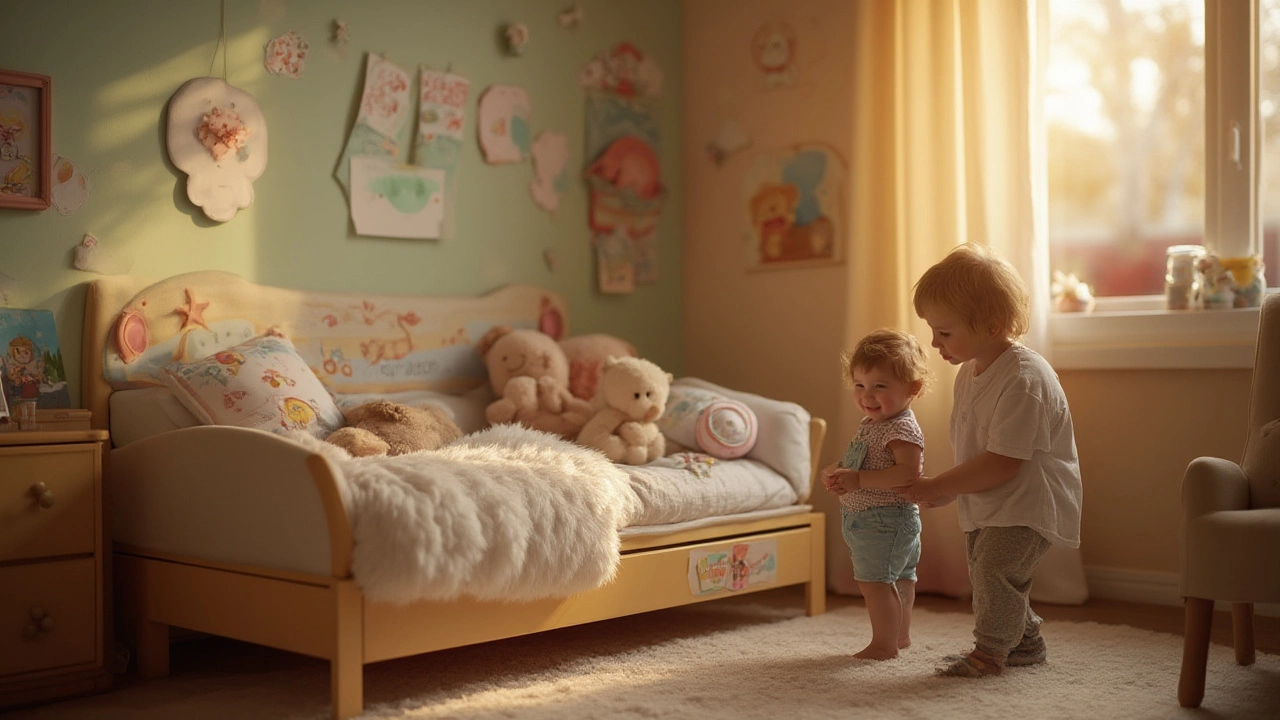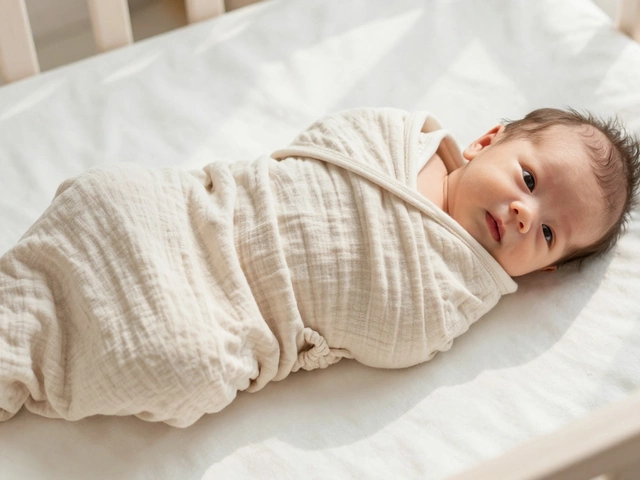
Ever noticed how quickly toddlers go from waddling with their first steps to climbing onto every piece of furniture? For parents, there’s a moment when you walk in and see your two-year-old straddling the edge of the crib rail with the determination of a mini mountain climber. That’s when the big question hits: Is 2 years old too early for a toddler bed, or just the right time?
Understanding Toddler Readiness: Signs Your Child Might Be Ready
This isn’t just about age. A lot of parents get fixated on the number of candles on the birthday cake, but the truth is, some 18-month-olds are already escape artists, while some three-year-olds are still cozy in their cribs. Ask yourself three things: Can your toddler physically climb out of their crib? Do they seem excited (or at least curious) about sleeping in a 'big kid' bed? Are there nighttime routines building up to this change, like potty training?
The American Academy of Pediatrics points out that some toddlers can attempt crib escapes as early as 18 months, and that’s a serious signal it might be safer to switch. The biggest factor is safety—not just comfort. In fact, a 2022 survey by Safe Kids Worldwide found that over 30% of parents made the switch because their kids started climbing out. But readiness is also about emotional comfort. Some toddlers can’t settle down in an open bed and might crave the security of crib rails. Others, especially those with siblings, may want what their big brother or sister has.
Here’s a checklist to help you decide if your child is truly ready:
- Toddler bed age: Most kids transition between 18 months and 3 years, with the sweet spot hovering at 2 years old.
- Your toddler tries to climb out of the crib or has already done it.
- They are tall for their age and look cramped in the crib.
- You’re actively potty training and want them to access the toilet at night.
- They verbalize interest or show excitement about a new bed.
Here's a fun fact from a 2023 study published in Pediatrics: Kids showing more independence during daytime activities tend to handle crib-to-bed changes better. If your toddler insists on doing things 'all by myself,' that independence might spill over into sleep, too.
One tip I've learned—try staging the transition. Add the toddler bed to the room, but keep the crib for a few days. Let your child test drive the idea before the crib disappears overnight. Involve your little one in picking sheets or a stuffed animal for the bed. This sense of ownership can make a huge difference in how smoothly things go.

Safety First: Making the Switch Without Stress
If there’s one thing you don’t want to mess around with at 2 a.m., it’s a hurt toddler or an unexpected nightmare triggered by a new sleep setup. Sleep safety is often the most important concern for parents flipping to a toddler bed at age 2. Cribs are designed to contain, but toddler beds stretch those boundaries—literally and figuratively.
Let’s talk about the actual risks. Falls are the most common accident after a move to a bed, and while kids bounce better than grown-ups, nobody wants a midnight tumble. So, should you wait? Not if your child is showing escape tendencies and could hurt themselves climbing out. If you’re going ahead, here’s how to keep things safe:
- Pick a toddler bed that’s low to the ground, and always use compatible guard rails. Some kids sleep wild, flinging arms and legs like tiny ninjas.
- Secure furniture throughout the room. That chest of drawers? Bolt it to the wall. Toddlers see a blank canvas for climbing. According to Consumer Product Safety Commission stats for 2023, tip-over injuries sent almost 12,000 kids under five to the ER—most from unsecured bedroom furniture.
- Double-check window locks and cords. Now that your child can roam with more freedom, window safety is a must.
- Place soft rugs or padded mats next to the bed for bonus protection—and comfort, for those first surprise landings.
- Keep the bedtime routine consistent. The new bed is exciting, but toddlers thrive on predictability. Run through your usual bath-song-story routine even when you change where they sleep.
One pro-parent tip: start introductions during naptime. That way if things go sideways, you haven’t ruined an entire night’s sleep. Also, move the crib mattress straight onto the toddler bed frame first—familiar smells and textures help a lot. And if your toddler starts visiting you in your bed at 3 a.m., you’re not alone. A 2024 Parents magazine survey found that 54% of parents said those first two weeks were filled with middle-of-the-night visits.
Here’s a look at recent injury stats:
| Year | Toddler Bed Injuries (Ages 1-3) | Crib Injuries (Ages 1-3) |
|---|---|---|
| 2023 | 6,250 | 5,400 |
| 2022 | 6,100 | 5,250 |
While the numbers seem close, most toddler bed injuries are bumps and bruises. Crib falls, especially after climbing attempts, can result in concussions or broken bones, which are far scarier. The point: escaping a crib can be riskier than sleeping in a bed—if your toddler is determined to climb, moving to a bed with the right precautions is usually safer.

Making the Transition Work: Real-World Tips for Parents
So, you’ve decided to move your 2-year-old into a toddler bed. Now what? The actual transition can be trickier than any parenting blog hints at. Toddlers crave control but also find comfort in routine. For most, the first week is a rollercoaster. Sleep, that beautiful thing parents fantasize about, suddenly seems even more fragile. But there are ways to make it easier for everyone—yes, really.
The first few nights set the tone. Start with a 'sleep safe' talk: show your toddler how to use the new bed properly, explain why the rails are important, and demonstrate getting in and out safely. If your child is old enough to understand simple rules, like 'no jumping on the bed,' start those conversations early—preferably before the leap from crib to bed happens.
It’s often tempting to use the bed transition as an opportunity to redecorate. That’s fun, but try to keep familiar things close by—favorite blankets, stuffed animals, even your usual nightlight. If the room suddenly looks different and the sleep space changes, it might be too much for one little brain to handle at once.
If your toddler suddenly discovers their new freedom to roam at odd hours, try a simple reward system for staying in bed. Sticker charts work surprisingly well at this age. For every night your child stays in bed until morning, give them a sticker and let them add it to a chart. Five stickers in a row? Maybe that earns one-on-one breakfast at a favorite spot, or a fun outing together.
Stalling tactics are real—everything from 'I need a drink' to 'just one more story.' If you fall into the extra-story trap, you’re doomed! Instead, keep answering those requests calm and routine: 'You already had your drink and your stories. Time for sleep now.' If necessary, make a 'sleep basket' with quiet activities (books, small soft toys) and let your child choose one before bed, building ritual into the routine and giving some sense of control back.
Struggling with bedtime battles? Here are field-tested ideas from parents and experts:
- Make it gradual: Start with naps in the new bed before overnight sleep.
- Try fading bedtime: Sit by the bed until your toddler is asleep, slowly moving farther away over a week.
- Consider a special 'bedtime buddy'—a plush toy that only comes out at night.
- If your toddler comes out of their room at night, gently walk them back with a reassuring word. Don’t make it a game, but don’t scold or get upset.
One mom I know swears by a toy traffic light: red means stay in bed, green means it's okay to get up. With so many clever approaches, you’ll find something that works for your family.
When should you press pause? If after two or three weeks your little one is absolutely unsettled—losing sleep, getting anxious, or showing big emotional changes—it’s okay to bring the crib back and try again in a few weeks. Kids cycle through phases of development, so what doesn’t work in July might magically work by September.
Remember, there’s no universal timer. Some two-year-olds are genuinely ready for a toddler bed, while for others, waiting another few months brings better sleep for everyone. What counts is tuning in: Is your toddler’s safety at risk in a crib? Are they old enough to understand simple bedtime rules? Then go for it—but keep it fun and light, and don’t stress about being ahead or behind.


